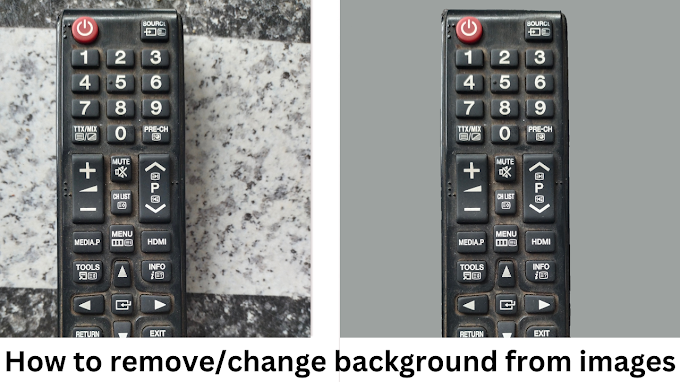Learn SQL: A Complete Course for Beginners
Do you want to fly cheaply and are tired of paying for the services from your previous sender or would like to learn how SQL works? SQL is the language of databases and it really helps with your data manipulation tasks, but sometimes starting off can be overwhelming for a beginner so this blog will go right back to SQL basics; which means zero assumptions mostly except that you know what are databases. In this article, we will discuss what SQL is and how it works while also providing some advice on writing efficient SQL queries. After reading this post, you will get a good introduction to SQL and can jump into more advanced topics. Well, let's get you started and learn what SQL?
What is SQL?
SQL is a powerful tool used for retrieving, inserting & manipulating data in relational databases. SQL stands for Structured Query Language. SQL is used in many fields such as banking, finance, insurance, retail, education, and health care.
SQL is the language used to communicate with a database which is something you can use to access, modify, store, and delete data. This also allows you to set relations between different tables in the database. Well, this also comes with a set of commands to query data from the database With a high-level yet simple language having a plethora of libraries, Python. SQL is used for writing complicated queries to get more out of the data analysis easily. SQL is a fundamental skill for many data professionals. SQL Skills for Analytical Roles There are countless companies today that require their employees to extract insights from the data and they need people who know SQL. Because of this, employers really value their SQL skills. Learning the basics of SQL is one of the keys to building your data for business analysis.
Why learn SQL?
SQL, Standard Query Language; is the language for databases to insert new data rows or update/delete existing rows. You use it to request and retrieve information, update data, or directly manage the database. SQL is a crucial skill for anyone who deals with data, including Data Scientists, Web Developers, Business Analysts, and Data analysts.
One can do many things with SQL as it is very friendly and flexible to use. Can be used to perform crud operations on a database You can use this Apache Hive tutorial to process large structured and semi-structured datasets, in addition, you also build complex queries for the specific information you want from your data. Furthermore, given that SQL has been positioned as the industry-standard language to access, manage, and analyze data in relational databases (who doesn't work with large datasets?), it serves as an important tool for anyone who deals with big volumes of information.
SQL can also create career avenues. Con: SQL learning, which is an advantage if competing for jobs or new roles. Think out of the box with this SQL and it will be your USP over other candidates. Just as high demand is put on data-driven solutions, so too is the need for those who know how to work with SQL.
At the end of the day, learning SQL is a recipe for giving yourself a small competitive advantage in getting that next job. If given the right knowledge and practice you can become a pro in this language opening too many career opportunities for you.
The basics of SQL
SQL Stands for Structured Query Language which is used with relational databases. It implements create, read, update, and delete actions for data in databases. This makes it a powerful tool as we can get access to a large amount of easily and conveniently manipulated data with just a few lines of code.
On its most basic level, SQL is a series of commands that can be used to create tables in any database, select and retrieve data from it, or update the existing data. Contact most popular orders are SELECT, INSERT, and UPDATE DELETE. A SELECT statement is used for fetching your data from a persistent storage and it´s called a database. To insert a new record in the database, we use an INSERT sentence. Update: Update statements modify records that already exist. DELETE statements remove records from the database.
Besides the basic commands, there are other useful database queries and manipulating data in databases.
You cannot expect to efficiently work with data in a relational database if you do not have at least the fundamental knowledge of this language. It is an important skill also for those who want to learn programming or work as a Database administrator. But literally, if you have some good awareness and practice then you can learn SQL in one go.
SQL commands
SQL is a versatile language and provides us the ability to perform different tasks on a database. There are many SQL commands for different purposes.
However, the most widely used SQL commands are SELECT, INSERT, UPDATE, DELETE, and CREATE.
SELECT: It permits you to visualize the database for specific information using column names and also by other conditions.
Response: The INSERT command is used to insert new records into the database.
UPDATE: To modify existing records, the UPDATE command is used. Use this command to update one or more fields in a row that already exists in the database.
DELETE The DELETE command is being used to delete records from the database. This command is helpful when you want to remove the whole row of data from the existing table.
CREATE: It is the Create command to be used if you are running a query that will result in creating new tables, views, stored procedures, functions, or triggers.
These are some well-known SQL commands. These are not the only commands that can be used in SQL but these will fill all of your needs if you use selectively them. SQL is important If you are interested in working with a database you should know all the commands over it.
Tips for learning SQL
1. To begin with, try out some simple commands in an online SQL console such as SQL Fiddle or DB Fiddle. This will make you more familiar with that particular language and how it works.
2. The next step is to learn about the different clauses and keywords used in SQL. You can refer to official SQL documentation as well for this :
3. Test different query photos like SELECT, INSERT, UPDATE, and DELETE. Attempt to modify queries and observe what type of results you receive fold begun
4. Use resources available online like tutorials, blogs, forums, and StackOverflow to help aid in answering your questions.
5. Participating in SQL-focused coding challenges helps you comprehend the language more fully and be also confident when writing your queries.
6. Visualize BuilSchema using graphical tools such as SQL Workbench/J or Visual Studio Code, where data is displayed in a tabular format and you can see query results live.
7. If you go in-depth with SQL, create actual databases for real-life systems and learn about DBMS like Oracle Database or Microsoft SQL Server.
8. New trends in SQL — Read blogs and attend conferences on different language levels.








0 Comments